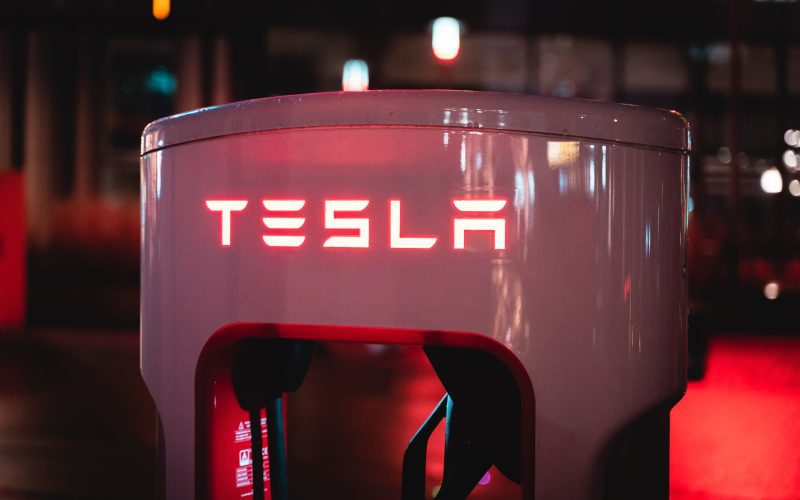As the electric vehicle industry continues to grow, Tesla has become a leading player in the market. But with recent talk of unionization among its workforce, many are wondering if Tesla can maintain its success and innovative edge while navigating the complexities of collective bargaining. In this post, we’ll explore both sides of the debate and take a closer look at what a unionized workforce could mean for Tesla’s future. Buckle up – it’s going to be an electrifying ride!
What is a Unionized Workforce?
When workers band together and form a union, they gain the power to negotiate with their employer on behalf of the entire workforce. This process is known as collective bargaining, and it can result in better wages, benefits, and working conditions for everyone involved.
However, unions can also be a source of conflict. Unions may strike or slow down production in order to secure better terms from management, which can cost the company money and disrupt operations. And not all workers want to be part of a union; some may prefer to work independently or don’t feel the need for union representation.
Tesla will need to weigh the pros and cons of collective bargaining carefully before making any decisions about whether or not to allow unions at its factories. On one hand, unions could help improve conditions for workers and give them more bargaining power. On the other hand, unions could also lead to conflict and disruption within the company.
The Pros of a Unionized Workforce
There are many advantages to having a unionized workforce, especially in the automotive industry. Unionized workers are typically more skilled and have more experience than non-unionized workers. They also tend to be more reliable and productive.
Unionized workers are also often able to negotiate better wages and benefits than non-unionized workers. This is because unions have more bargaining power than individual workers. Union contracts often include provisions for raises, health insurance, and other benefits.
Another advantage of unionization is that it can help to create a more stable workforce. Unionized workers are less likely to quit or be fired than non-unionized workers. This stability can lead to increased efficiency and productivity in the workplace.
Finally, unionization can help to improve working conditions in the workplace. Unions can negotiate for better safety standards, for example. They can also work to improve communication between management and employees.
The Cons of a Unionized Workforce
There are a number of potential drawbacks to having a unionized workforce, which could adversely affect Tesla’s bottom line. These include:
1. Increased labor costs: Unions typically negotiate higher wages and better benefits for their members, which can lead to increased labor costs for employers. This could put pressure on Tesla’s already slim margins, and make it difficult to compete with non-unionized rivals.
2. Reduced flexibility: Union contracts often include provisions that restrict an employer’s ability to change work hours, assignments, or other conditions of employment. This can limit Tesla’s ability to respond quickly to changes in demand or market conditions.
3. Inflexible work rules: Union work rules can be inflexible and may not always reflect the needs of the business. For example, union rules may require that certain jobs be done by seniority, regardless of whether another worker might be more qualified or capable of doing the job.
4. Loss of control: Once a union is established, employers may lose some control over their business. For example, unions can elect their own representatives to sit on company boards, and these representatives may have different priorities than the company’s management team.
5. Impediment to innovation: Unions can sometimes be resistant to change, and may oppose new technologies or processes that could improve efficiency or productivity. This can make it difficult for Tesla to implement new ideas or stay ahead of the competition
Can Tesla Survive a Unionized Workforce?
A unionized workforce can be aTesla’s downfall. Here are the pros and cons of collective bargaining:
PROS:
1. Workers have more power when they are unionized. They can negotiate for better pay and working conditions.
2. Unionized workers are less likely to be fired than non-unionized workers. This gives them job security and stability.
3. Unionized workers usually receive better benefits than non-unionized workers, such as health insurance and retirement plans.
4. Unionized workers have the right to strike if they are not happy with their working conditions or pay. This can be a powerful negotiating tool.
CONS:
1. Unions can be expensive for companies to deal with. They may have to pay higher wages and benefits to keep the union happy.
2 . Unions can be inflexible and resistant to change . This can make it difficult for companies to adapt and compete in the marketplace .
3 . Unions can be disruptive , especially if there is a strike . This can lead to lost production, which costs the company money .
Conclusion
After reading this article, it is clear that there are both pros and cons of labor unions for Tesla. It appears that a unionized workforce could be beneficial for the company in terms of higher wages and improved working conditions, but it could also hurt the flexibility and innovation that makes Tesla so successful by introducing rigid rules. Ultimately, it is up to Tesla’s management team to weigh the costs and benefits before making any decisions regarding collective bargaining. Whether they decide to embrace or reject unionization will determine their future success in an increasingly competitive market.
Tesla’s History with Unions
In recent years, Tesla has been embroiled in a number of high-profile disputes with unions. In 2017, the United Auto Workers (UAW) filed a lawsuit against Tesla, alleging that the company had violated labor laws by preventing workers from organizing. The suit was eventually settled, but the UAW has continued to try to unionize Tesla’s workforce.
In 2019, a group of workers at Tesla’s factory in Fremont, California voted to unionize with the UAW. However, Tesla has appealed the decision and the vote is currently being challenged.
The pros and cons of unionizing Tesla’s workforce are complex and contentious. On the one hand, unions could help to improve working conditions and pay forTesla’s employees. On the other hand, unions could also make it more difficult for Tesla to compete against its non-unionized rivals.
only time will tell whether unions will be able to gain a foothold at Tesla.
The Pros of a Unionized Workforce
There are many benefits to a unionized workforce, including higher wages and better working conditions. However, there are also some drawbacks, such as the potential for strikes and increased costs. Overall, the pros outweigh the cons and Tesla should be able to survive a unionized workforce.
One of the biggest benefits of a unionized workforce is that workers will likely see an increase in their wages. Unionized workers have more negotiating power than individual workers and can demand higher wages from their employers. They can also negotiate for better working conditions, such as safer workplaces and healthier work-life balance.
However, there are some drawbacks to unions. One is that they can lead to strikes, which can disrupt production and negatively impact Tesla’s bottom line. Another is that unions can be expensive for companies, as they need to pay for negotiation fees and other costs associated with collective bargaining agreements.
Overall, the pros of a unionized workforce outweigh the cons.Tesla should be able to survive a unionized workforce if it makes some concessions, such as agreeing to pay higher wages or invest in safety measures.
The Cons of a Unionized Workforce
When it comes to unions, there are pros and cons for both employees and employers. On the pro-employee side, unions give workers a voice in the workplace and help them negotiate for better wages, hours, and working conditions. Unions also provide employees with job security and protection from unfair dismissal. On the employer side of things, unions can be seen as disruptive and expensive. They can also make it difficult to manage a workforce effectively.
So, what does all this mean for Tesla? Can the company survive if its workers unionize?
There are a few key points to consider. First, Tesla is already facing increased scrutiny from regulators and lawmakers. A unionized workforce could add even more pressure on the company. Second, Tesla’s business model is based on innovation and speed. Unionizing could slow down production and make it harder for the company to compete. Finally, Tesla is a publicly-traded company. Shareholders may not be happy if the company’s profitability is affected by a unionized workforce.
In the end, only time will tell if Tesla can survive a unionized workforce. For now, both employees and employers should weigh the pros and cons carefully before making any decisions.
How Tesla Could Benefit from a Unionized Workforce
There are many benefits that Tesla could reap from a unionized workforce. For one, unions typically lead to better wages and working conditions for employees. This could help Tesla attract and retain top talent, as workers would be more likely to stay at the company if they felt they were being treated fairly. Additionally, unions often have strong relationships with government officials, which could help Tesla secure favorable regulations or tax incentives. Finally, a unionized workforce would give Tesla employees more bargaining power when it comes to negotiating salaries and benefits, and could help the company avoid costly lawsuits down the road.
Of course, there are also some potential drawbacks to collective bargaining at Tesla. For example, unions can be quite bureaucratic and inflexible, which could hamper the company’s ability to innovate and move quickly. Additionally, union dues can be quite expensive, eating into profits or forcing Tesla to raise prices on its products. And finally, there is always the risk of disruptive strikes or other labor unrest if workers feel they are not being treated fairly by management.
Overall, there are pros and cons to collective bargaining at Tesla. The company would need to weigh these carefully before deciding whether or not to unionize its workforce.
How Tesla Could be Hurt by a Unionized Workforce
The possibility of a unionized workforce at Tesla is one of the biggest concerns for the company. Unionized workers have the potential to hurt Tesla in several ways.
First, unions can be expensive. Unions typically negotiate for higher wages and better benefits, which can put a strain on a company’s budget. Tesla would likely have to raise prices on its cars in order to cover the increased costs of a unionized workforce. This could make Tesla’s cars less competitive in the marketplace and hurt sales.
Second, unions can make it more difficult for companies to be flexible and responsive to market conditions. For example, if Tesla needs to cut production due to falling demand, a union contract might make it harder to do so quickly. This could lead to excess inventory and further financial problems for the company.
Third, unions can create an adversarial relationship between management and workers that can hamper communication and cooperation.Tesla founder and CEO Elon Musk has spoken out against unions, saying they are “not right” for his company. If Tesla’s workforce does unionize, it could create tension and conflict within the organization that could damage morale and productivity.
Conclusion
In conclusion, the decision of unionizing a workforce is a complex one. Companies need to carefully consider the pros and cons of collective bargaining before making a final decision. If Tesla chooses to unionize their employees, they must be aware that it could lead to higher labor costs and slower production times. However, unions can provide greater job security for workers who feel unfairly treated or whose wages are not equitable. Ultimately, it’s up to Tesla’s management team to decide if they believe that unionization will benefit their company in the long run or not.












